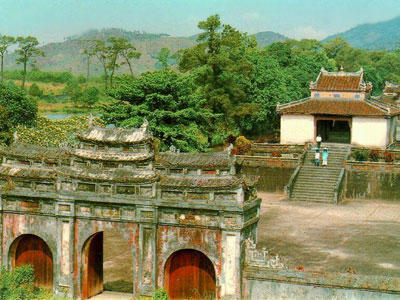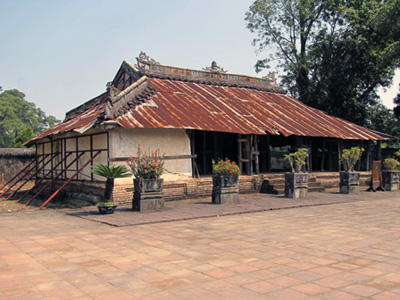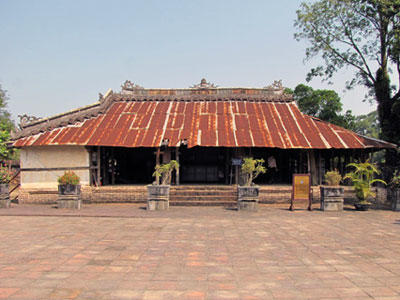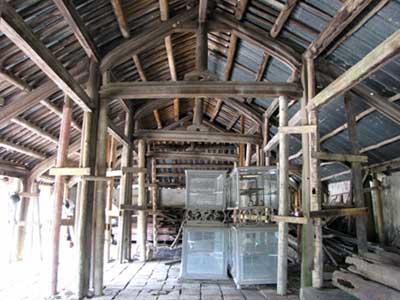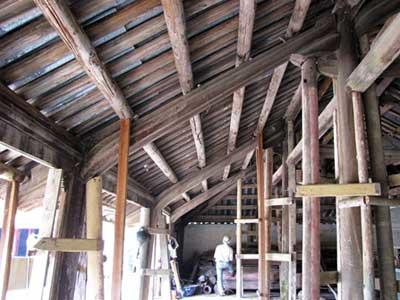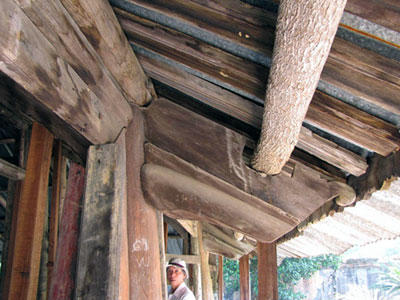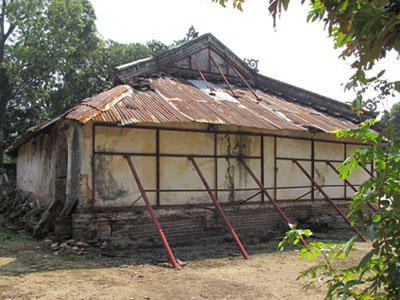Background
Emperor Minh Mạng (1820-1841), the second ruler of the Nguyễn Dynasty, ruled southern and central Vietnam from 1820 to 1841. From the capital at Hué, he implemented an extensive building program, which included construction of his own funeral complex in the southwest corner of the city. Ta Tung Tu, a wooden structure built in a traditional architectural style with three main sections and two wings, is part of Minh Mạng’s mausoleum complex. It was built between 1841 and 1843, during the reign of Minh Mang’s successor, Thiệu Trị, as the temple of worship. Years of deterioration had taken their toll on the structure, which was included on the World Monuments Watch in 1996 and 2000.
How We Helped
Soon after inclusion on the Watch, WMF worked on three structures at Minh Mạng Mausoleum, the Stele House, the Minh Lau Pavilion, and the Hien Duc Mon Gate, which is the entrance to the main temple, Sung An. Work in these other areas eventually led to a commitment to complete condition surveys for Ta Tung Tu. In partnership with the Hue Monuments Conservation Center, WMF developed a conservation plan, which is now being implemented. Work to conserve the structure’s roof and decorative elements are underway. In addition, the building’s foundation and floor will be restored and consolidated.
Why It Matters
Minh Mạng’s mausoleum complex is one of the premier tourist attractions in Vietnam and a UNESCO World Heritage site. WMF and its local partners are undertaking work to assure that this prominent cultural site is in a state of preservation that will allow it to survive long into the future and be appreciated by locals and visitors alike.


